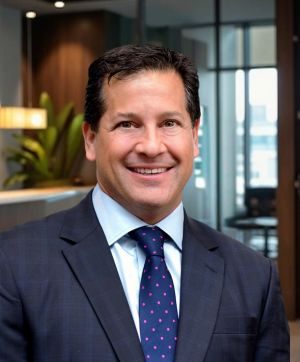Develop/Flip or IPP
Originally Written March 24, 2025
As foreshadowed in my recent Infocast recap, I’d like to provide some thoughts on a question I received several times during the conference – as a developer, is it better to conduct a develop and flip strategy or build an IPP? How do developers optimize their business – i.e., make the most money. (Yes, we’re done with developing for the purpose of fighting climate change alone.)
Over the past 10 years, the renewable development business has evolved. Per my last thought piece, many IPPs have now gotten too big for a typical exit – they’re going to need to IPO. So, if you’re thinking about building an IPP, you have to think about how big you are going to build and what the exit will look like when you get there. As projects themselves have grown, so have the assets under management by IPPs, especially the IPPs that are focused on building and operating utility-scale projects.
On the other hand, a lot of the major IPPs continue to purchase early-, mid- and late-stage assets, so developers that are building pipelines continue to have an exit for their assets provided they are well-located. Developers can opt to sell their assets outright or sell those assets under a DSA/JV scenario where they can recover their devex, potentially receive a retainer over time and then receive a development fee by achieving certain milestones related to the projects.
So, when a developer approaches me about going IPP, I often have to ask why? What are you trying to achieve and are you willing to do the work to get there? Just think about what it takes? Developing and selling assets requires a development team, including siting and land specialists, engineers, etc., but when you go to IPP, you will need the following – if not more – a proper CFO, financial team and accounting system, people to oversee capital raising and stewardship, asset management, procurement specialists, transmission specialists, construction managers, offtake procurement specialists (if you want to do it right), etc. You’re going to need to raise $X00’s of millions in equity, debt and tax equity as well, so you’d better have an experienced and proven management team.
Now think about some of the simple math. D-Flip shops spend $1 – $2mm per site to secure an “early-stage” asset, then flip them to recover all of their Devex, de-risk their own capital at-risk, receive backing to put up IX collateral, etc., in order to ultimately make anywhere from $.05 – $.12/watt for a 100MW site that reaches NTP. That could be a 5x multiple, or for larger sites, it could even be greater.
For an IPP, you are raising a minimum of $200mm of equity to build enough assets to create a viable exit. But given the returns that equity investors (or even credit for that matter) require, you’re looking at a $400mm exit (on equity alone) to start seeing real money. Yes, you can challenge this math as it’s not meant to be perfect. One could use less equity and use credit to get to $200mm total, but you’ll most likely not have the balance sheet you really want to secure L/Cs on your own. And if this isn’t clear, just look at a number of the IPPs that have raised equity, credit and debt and see how complicated their capital stack makes it when they are trying to raise new capital or exit altogether.
Accordingly, when setting your sights on building an IPP, I think that you really need to have a vision and a strategy as well as a strong stomach for what’s to come as well as incredible management skills (yes, there are examples of those lacking these, but are they really successful?). I would advise anyone even considering creating an IPP to look around you. Who are the best IPPs? How did they go about getting to scale, raising the right amount of capital, etc.?
But for the most part, as one who recently took a huge leap to build a de novo firm, I would argue against building an IPP right now. Build projects. Build your team, skillset and strategy. Find a way to create projects that others want and sell them. You don’t need to hire 100’s of employees to make real money in renewables and many of those that have built large IPPs often find that an exit is more difficult at the end than what they originally thought.

Written by Rob Sternthal, Managing Partner
For the last 20+ years, Rob has been a leading investment banking executive and recognized platform builder across the renewable power, energy, ESG and real assets sectors, advising on more than $25 billion of transactions.
Whether it be with regard to engaging an advisor, looking for a capital partner, or seeking out a thought partner as you contemplate the evolution of private investment in critical infrastructure, we would welcome the opportunity to connect with you.
Securities Products and Investment Banking Services are offered through BA Securities, LLC. Member FINRA SIPC. Expedition Infrastructure Partners (“XIP”), LLC and BA Securities, LLC are separate, unaffiliated entities.
© 2025 Expedition Infrastructure Partners, LLC. All Rights Reserved.

